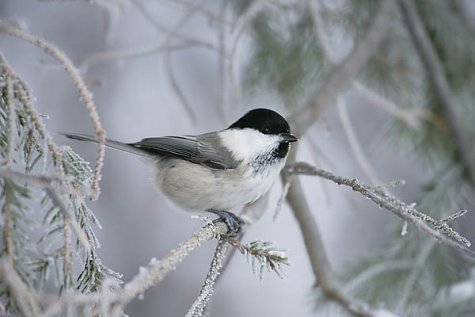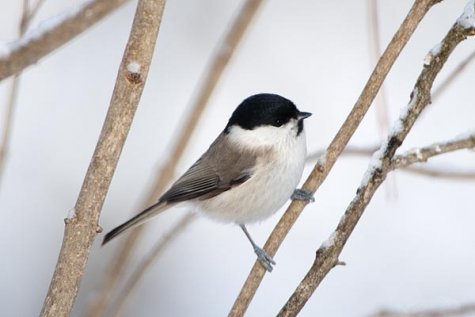Winter bird feeder webcam – willow tit
Photos: Arne Ader
Willow tit Põhjatihane Parus montanus
The marsh tit that was introduced earlier and the willow tit presented below are confusingly similar. They are not particularly keen bird feeder visitors, but that they don’t come for seeds at all isn’t true either.
Bird man Hannes Margusson who has followed the bird feeder webcam some years has very aptly described discovering the willow tit:
"A while ago I saw the willow tit at the birdfeeder. At first I heard its call from the computer "di-dää-dää, di-dää-dää", I opened the webcam window and very soon the boy was there. Large, black patch under the chin with blurred edges and bright wing patches, all nicely visible”.
What differences should be noted, compared to the marsh tit? The black crown of the willow tit is dully black, the black head plumage of the marsh tit is glossier and the under-chin beard is broader. Cheeks more broadly white, reaching to the nape. On the wings of the willow tit we see bright lengthwise streaks, missing in the marsh tit. Both species have similar beak and leg colours.
See the marsh tit story: http://looduskalender.ee/node/19047
In winter they search for food in conifer and mixed forests where mixed flocks of various tits are quite common. While other tits primarily operate in tree crowns we see the willow tit in action also on tree trunks. The little bird has reason to go there because willow tits collect stores for poorer days. hiding the seeds found in bark crevices.
The winter number of willow tits is significantly influenced by vagrants arriving here from the north and northeast. They have been in the winter bird feeder camera view this year – the call described above has signalled their visit.
Willow tit observations: LINK
For comparison a photo of the marsh tit whom you can train to eat from your hand.
Marsh tit










